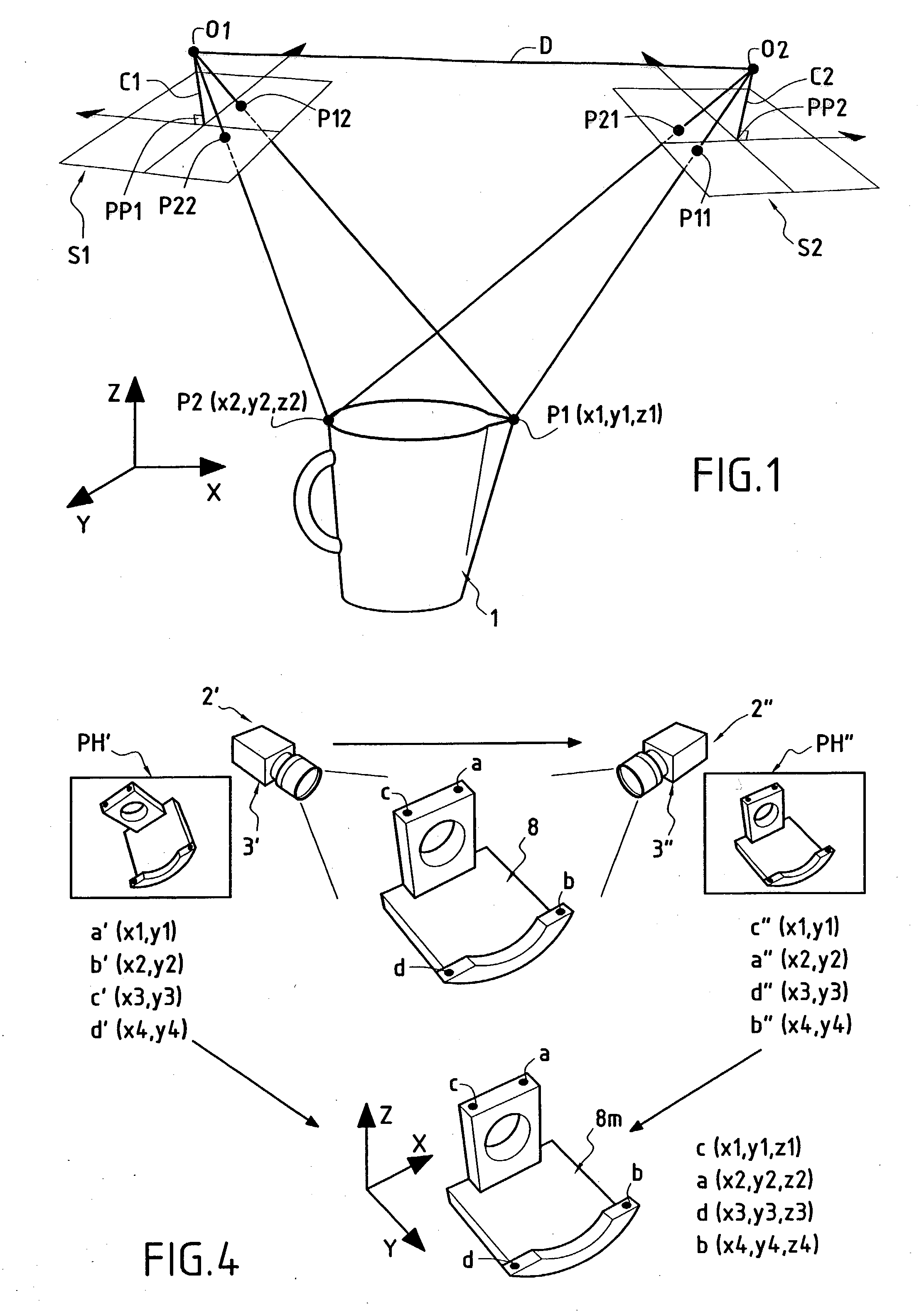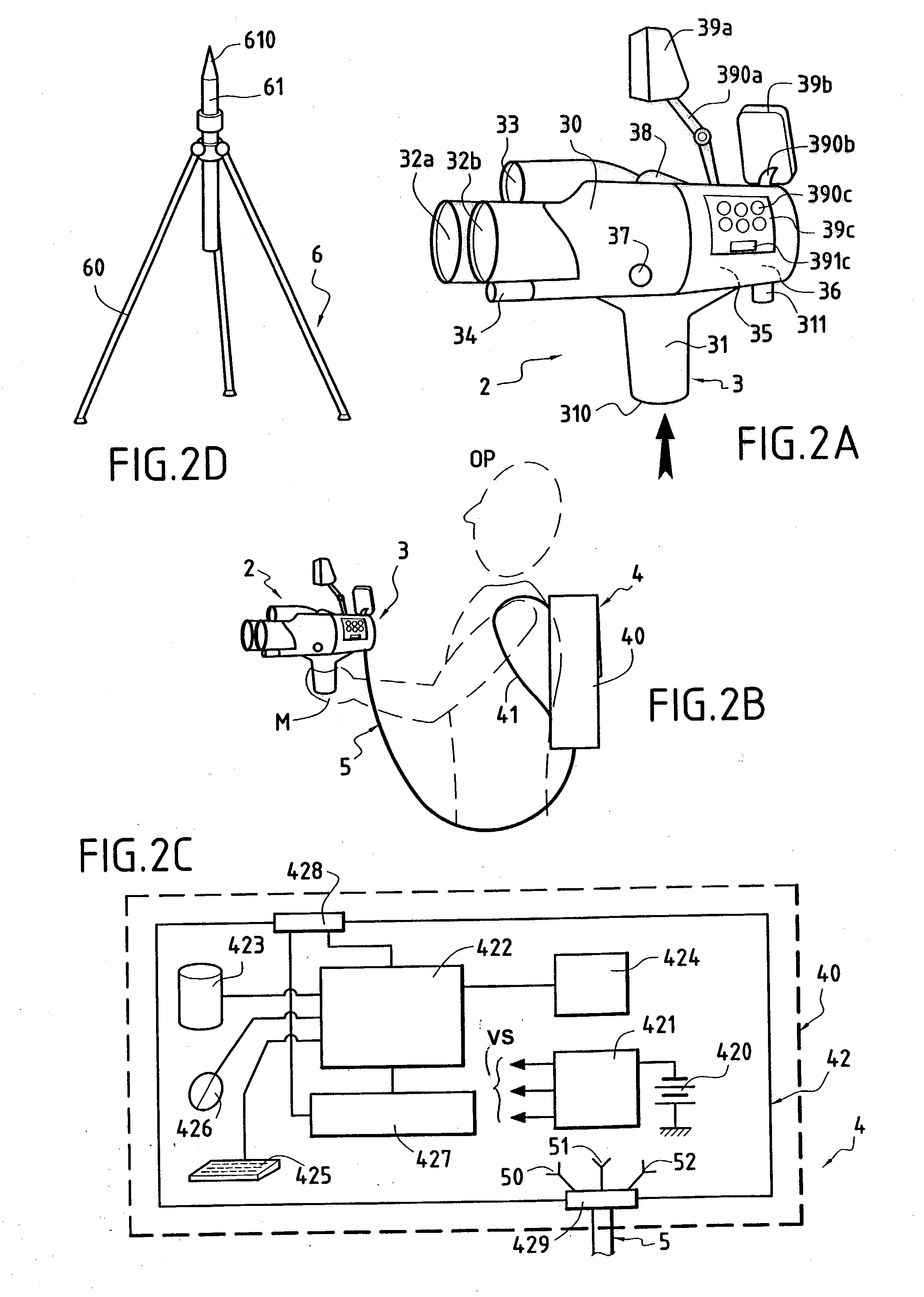System and a method of three-dimensional modeling and restitution of an object
a three-dimensional modeling and object technology, applied in the field of system and a three-dimensional modeling and object restitution, can solve the problems of chromatic aberration, degrade measurement quality, and the inability to accurately reflect reality in the representation of ideas
- Summary
- Abstract
- Description
- Claims
- Application Information
AI Technical Summary
Benefits of technology
Problems solved by technology
Method used
Image
Examples
Embodiment Construction
[0068] There follows a description of the system for three-dimensionally modeling and restitution an object constituting a preferred embodiment of the invention, given with reference to FIGS. 2A to 2D.
[0069] To simplify the description, terms such as "three-dimensional" or "in three dimensions" are replaced below by the abbreviation "3D".
[0070] In the figures, elements that are identical have the same references and are described again only where necessary.
[0071] FIG. 2A is a diagram of that which is referred to below as the "first" subsystem 2 in a system of the invention.
[0072] This subsystem 2 is essentially constituted by a housing 3 similar in appearance to a video camera, a camcorder, or the like. The housing 3 comprises a rigid cell 30 advantageously made of magnesium alloy, thus ensuring that it is both rigid and lightweight. In conventional manner, the shell is provided with a bottom handle 31.
[0073] The first subsystem 2 comprises firstly, in the housing 3, optical element...
PUM
 Login to View More
Login to View More Abstract
Description
Claims
Application Information
 Login to View More
Login to View More - R&D
- Intellectual Property
- Life Sciences
- Materials
- Tech Scout
- Unparalleled Data Quality
- Higher Quality Content
- 60% Fewer Hallucinations
Browse by: Latest US Patents, China's latest patents, Technical Efficacy Thesaurus, Application Domain, Technology Topic, Popular Technical Reports.
© 2025 PatSnap. All rights reserved.Legal|Privacy policy|Modern Slavery Act Transparency Statement|Sitemap|About US| Contact US: help@patsnap.com



